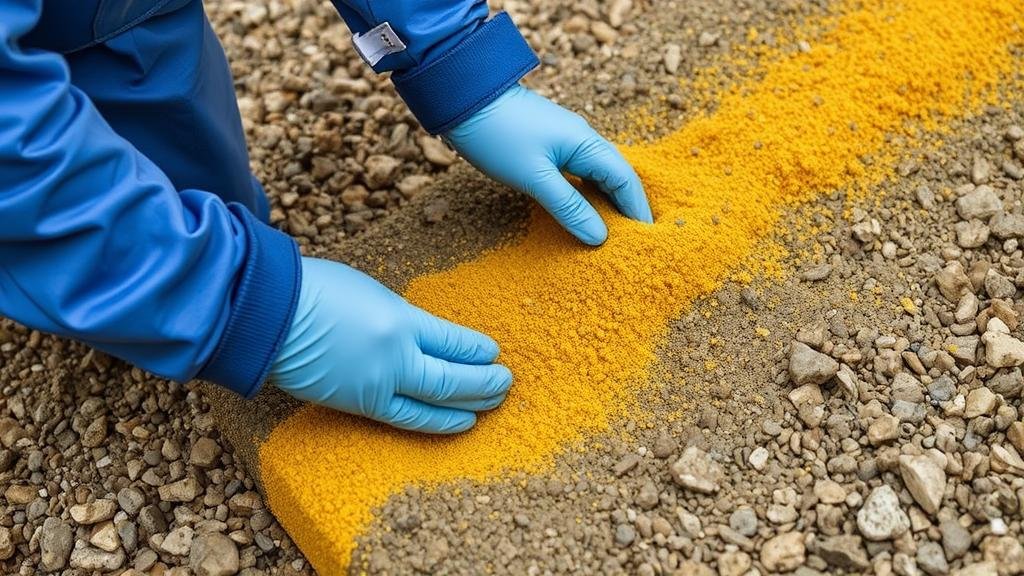Recovering Gold Dust From Unconsolidated Gravel Layers in Riverbeds
Recovering Gold Dust From Unconsolidated Gravel Layers in Riverbeds
The recovery of gold dust from unconsolidated gravel layers in riverbeds has been a pursuit for centuries, driven by the precious metals high value and aesthetic appeal. This article aims to provide an in-depth exploration of the processes, techniques, and considerations associated with gold recovery in these natural environments.
Understanding Gold Dust and Its Geological Context
Gold dust refers to small particles of gold that are often found in alluvial deposits within riverbeds. These particles are typically the product of weathering processes where larger gold nuggets break down into smaller pieces over time due to physical and chemical factors such as erosion and hydraulic forces.
Geological Formation of Gold Deposits
Gold deposits in riverbeds usually originate from upstream sources like gold-bearing veins in rocks. As water flows through these rocks, powerful hydraulic forces can dislodge particles of gold, which subsequently accumulate in unconsolidated gravel layers. These layers are often characterized by their loose, uncemented nature, allowing for easier extraction of the gold particles.
Techniques for Recovering Gold Dust
Various techniques have been developed for recovering gold dust from riverbeds. Each method has its unique advantages, effectiveness, and environmental considerations.
Panning
Panning is one of the oldest and simplest methods for gold recovery, where water is used to separate heavier gold particles from lighter sediments. process involves:
- Filling a shallow pan with gravel and water.
- Shaking and swirling the pan to allow the gold to settle to the bottom.
- Carefully washing away the lighter materials, leaving behind the concentrated gold dust.
This method can be quite effective in areas where gold is present in small quantities, but it is labor-intensive and requires patience.
Sluice Boxes
Sluice boxes are a more advanced method of recovering gold that utilizes flowing water to facilitate separation. The process includes:
- Constructing a sluice box with riffles to capture gold.
- Directing water into the box, allowing gold particles to settle due to their weight.
- Collecting the retained gold dust at regular intervals.
According to research, sluice boxes can improve recovery rates significantly, often capturing about 90% of the gold in a given sediment.
Highbanking
Highbanking combines elements of panning and sluicing, allowing for the processing of gravel away from water sources. It involves:
- Utilizing a powered pump to bring water to the highbanker.
- Feeding gravel into the highbanker, which processes it similar to a sluice box.
This method can increase production rates while still maintaining effective gold recovery, making it a favored option among commercial operations.
Environmental Considerations
As with any resource extraction, environmental considerations are paramount. recovery of gold dust must be conducted responsibly to minimize impacts on river ecosystems. Key practices include:
- Adhering to local regulations and obtaining necessary permits.
- Minimizing disturbances to habitats and fish spawning areas.
- Useing erosion control methods to safeguard riverbanks.
For example, the implementation of riparian buffer zones can help in securing the rivers ecological health while still permitting gold recovery activities.
Real-World Applications and Case Studies
The techniques mentioned are not merely theoretical but are employed in various real-world scenarios. For example, the ongoing operations in the Yukon Territory and California have demonstrated the effectiveness of sluice boxes and highbanking methods in recovering significant amounts of gold dust.
In California, miners participating in recreational gold panning often find measurable quantities of gold, sometimes yielding nuggets worth hundreds of dollars. e successful endeavors underscore the ongoing relevance and efficacy of traditional gold recovery methods.
Actionable Takeaways
For individuals or small operations looking to recover gold dust from unconsolidated gravel layers, consider the following steps:
- Research local laws and acquire necessary permits for gold recovery.
- Begin with basic methods like panning before investing in more complex equipment such as sluice boxes or highbankers.
- Evaluate potential sites prior to starting work, focusing on areas known for alluvial gold deposits.
- Practice sustainable mining techniques to ensure environmental protection and compliance with regulations.
By utilizing these methods responsibly, individuals can engage in the gratifying process of gold recovery while contributing to the preservation of river ecosystems.



